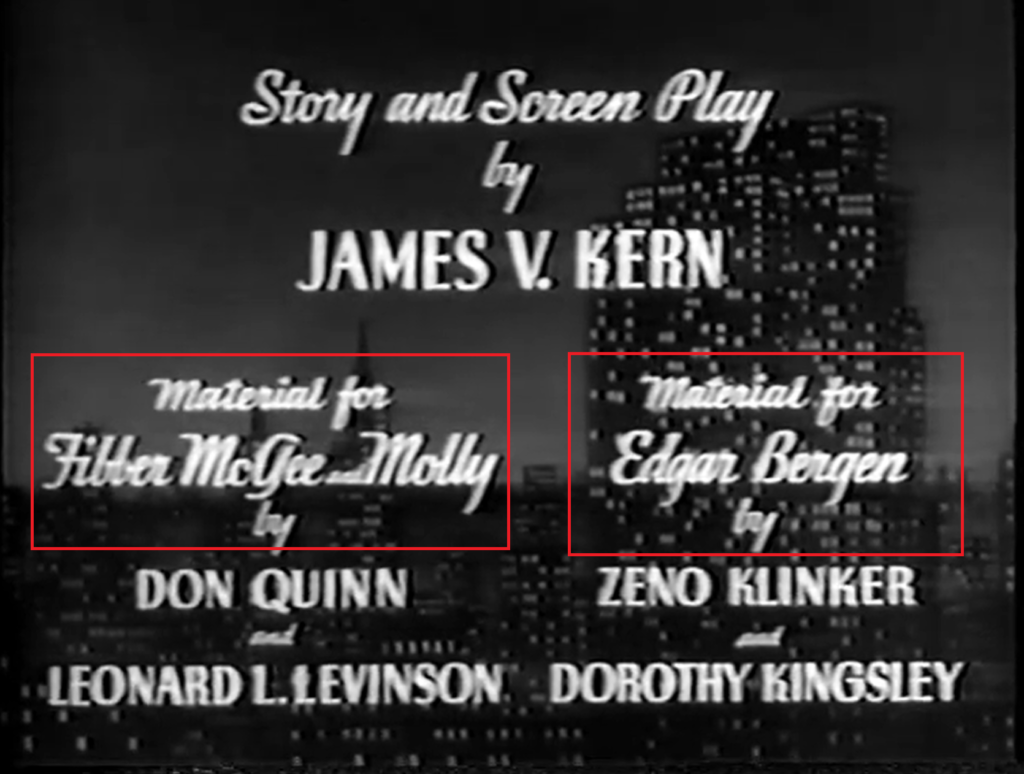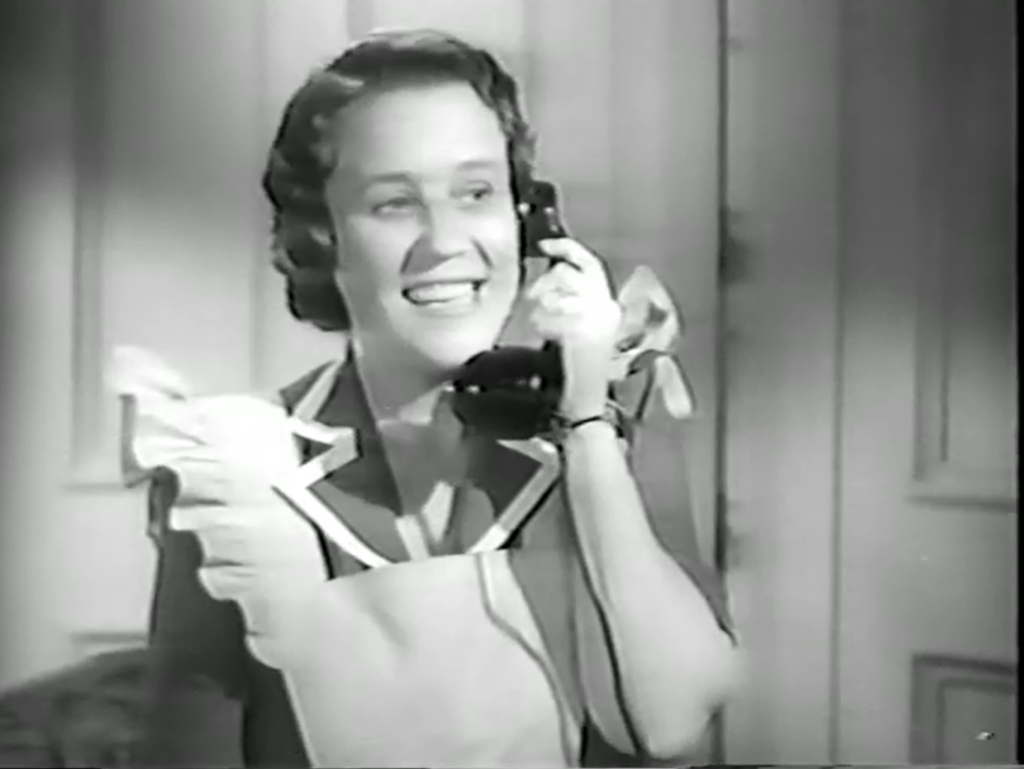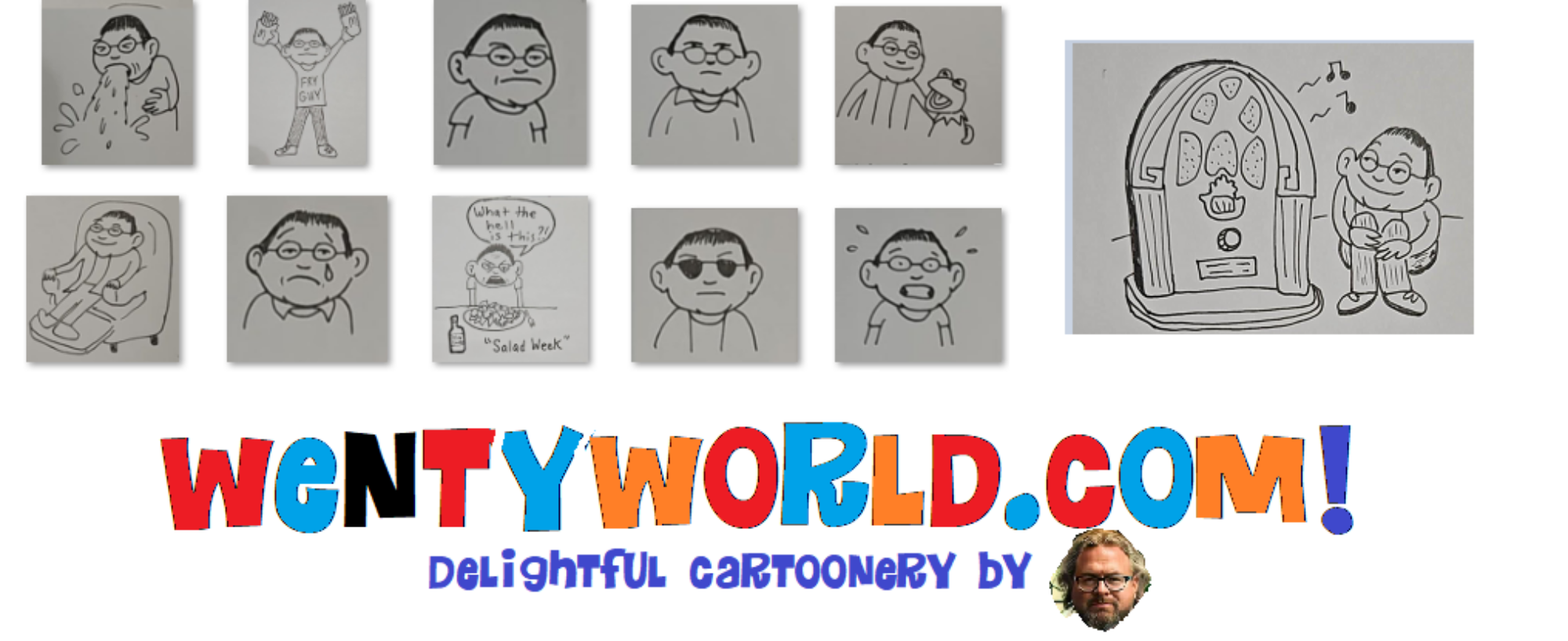I first saw the 1941 film “Look Who’s Laughing” in the early 90’s on AMC, back when it was called American Movie Classics. It was part of a double feature with the Damon Runyon drama “The Big Street”. Both films starred Lucille Ball but neither featured her doing anything particularly funny. “Look Who’s Laughing” casts her in a “straight” role as Edgar Bergen’s assistant, surrounded by popular radio comedians Jim and Marian Jordan (“Fibber McGee and Molly”), Harold Peary (“The Great Gildersleeve”) and Charlie McCarthy. (He gets separate billing from Bergen in the film so who am I to disagree?)

So let’s talk about Bergen and McCarthy. I had a fascination with ventriloquism as a kid and even learned some of the tricks…I hosted a 5th or 6th grade student concert with an Animal Muppet Puppet and even bought a Charlie McCarthy dummy out of the Johnson Smith catalog (smoke from fingertrips! Trick gum! Fool your friends!). As an adult the thing that fascinates me about this movie is how delicately they make the move from Charlie being a puppet that Edgar performs–during a broadcast of his weekly radio show, and at a party being thrown for his engaged assistant–to a completely independent character who seems to think and move without any assistance from Bergen.

I mean, there’s “suspension of disbelief”, and there’s “suspension of disbelief”. This is as suspended as you can get. But they’re very wise in the way they sneak it up on you. In the sequel to this film–it was popular enough to warrant a sequel!-they took things, in my opinion, a step too far. “Here We Go Again” (best sequel title ever) features a walking, fully ambulatory Charlie McCarthy which is actually a child, a midget or a very short adult with a big old Charlie mask on.

Seeing Charlie sitting by himself in the soda fountain seems perfectly okay…you might stop and think “Where the hell are they hiding Bergen?” or you might not. But seeing some human being with a Charlie McCarthy head is never anything but creepy as hell.

As for Fibber McGee and Molly, they are marvelous. There’s a lot of visual humor added to their scenes, most of it relating to Fibber’s crazy inventions. And there are lots of wonderful scenes between Fibber and his frenemy (if the word existed back then they’d have used it) Throckmorton P. Gildersleeve.

There are two elements in the film that spotlight the unique nature of radio comedy. First, any movie with Fibber McGee and Molly is bound to include some kind of reference to Fibber’s closet. It was truly one of the most iconic sequences in all of radio…McGee’s looking for something, remembers it’s in the hall closet. We hear footsteps…a door opening…and then a 10-seconds-plus cacophony of noise, object after object klanking, klunking and klinking out of the tiny room. usually topped off with a bicycle bell or something similar. This gag was perfected and re-used so brilliantly on radio that no visual representation would ever be acceptable. In “Look Who’s Laughing” they seem to admit defeat by doing a very short sequence of things falling out. It is similar to so many of Jack Benny’s “visual” radio gags in that the listener’s own imagination plays the most vital role.

On the other hand, there is Marian Jordan’s little girl character. On the “Fibber McGee and Molly” radio show she’s depicted as a child who comes to visit, pester or otherwise engage with Fibber (after Molly has conveniently left the scene). But in “Look Who’s Laughing” we see that it is indeed Marian Jordan who plays the character, drafted in this case to call Charlie McCarthy and pose as a little girl who might be a girlfriend for the wooden lad.

“Look Who’s Laughing” is a great record of the power and popularity radio held over the nation at a very unpredictable time in history. I’ve read things that say the film, released 17 days before the attack on Pearl Harbor. was a huge hit because people needed something to laugh at in 1941. Viewed outside of that context, it’s a typical 1940’s film comedy: The plot doesn’t matter, most of the jokes land, and the stars are fun people to spend a couple of hours with.




